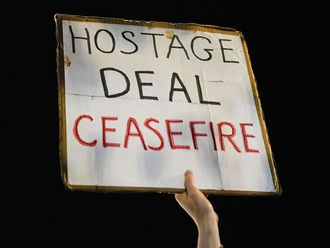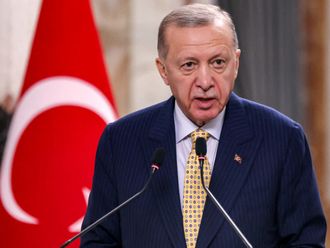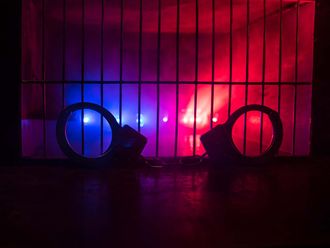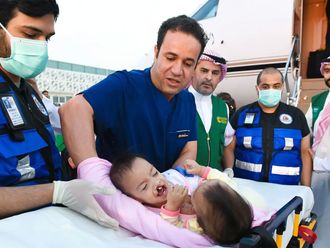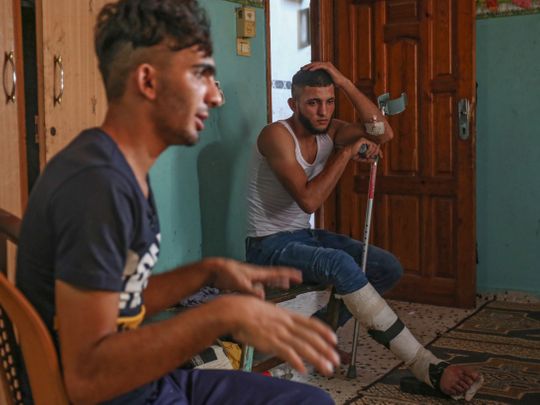
Gaza: Mohammed Hellis takes three things with him to demonstrate Fridays on the Gaza border with Israel: a traditional Palestinian scarf, a slingshot and his ID card for identification if shot dead.
The 21-year-old no longer believes the protests that began more than 18 months ago will change Israeli policy or improve his life in the Gaza Strip.
But, like for the few thousand people who continue to turn out weekly, the demonstrations have become a potentially deadly routine.
“When Thursday comes around I don’t know how to sleep. I am excited for Friday. What do I want to do tomorrow? I think about getting ready, where I will go, who will come with me,” Hellis said.
The March of Return protests began in March 2018 to peacefully protest Israel’s crippling decade-long blockade of Gaza.

Officially the demonstrations are still going strong but the numbers of protesters have dropped from tens of thousands for much of 2018 to only a few thousand, and global interest has all but disappeared.
At least 311 Palestinians have been killed by Israeli fire in Gaza since the protests began, the majority during the demonstrations, while thousands of others have been wounded.
Hellis shares a single bedroom in a rundown flat in Shejaiya, east of Gaza City, with his four brothers.
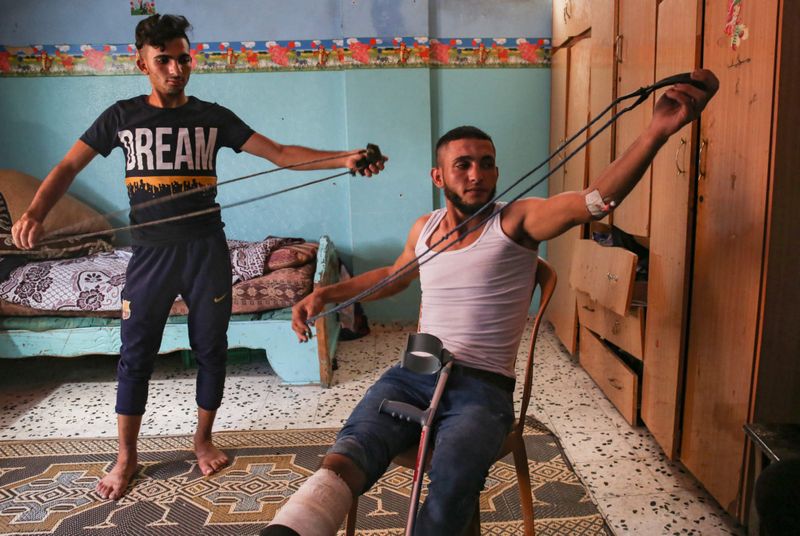
Between them they have been shot 15 times since protests began, they say.
None of them has full-time work - around two-thirds of young people in Gaza are unemployed.
His older brother Ziad’s leg is in a cast and he lost most of his hearing after being hit on the ear with a tear gas canister, but he drags himself to the border most weeks.
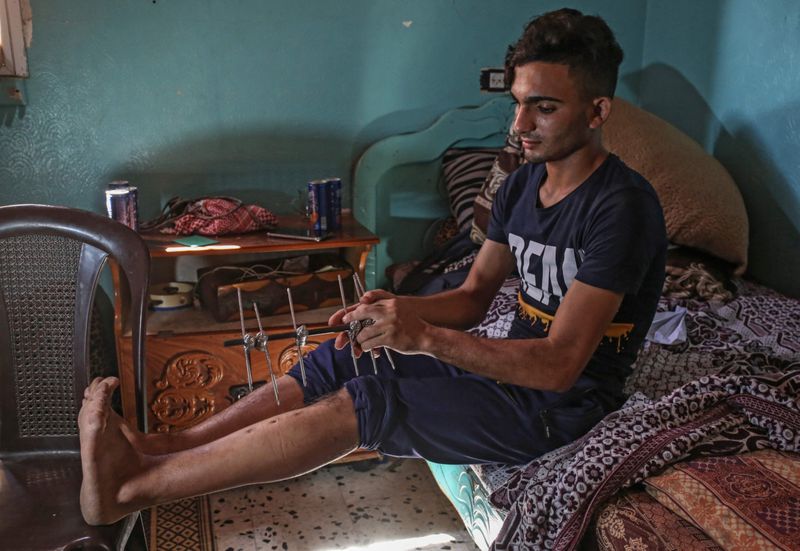
Hellis, who has gained a dedicated group of young followers due to his reputation for bravery close to the border fence, says people are “suffocated by life” in Gaza.
“There are people with a very high level of poverty. They are just asking for normal lives.”
Critics of Israel’s blockade say it is collective punishment of two million people and feeds extremism.




